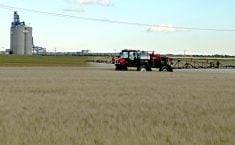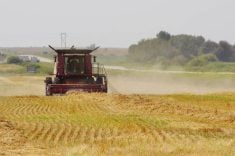In April, Statistics Canada predicted that Manitoba farmers would seed 3.3 million acres of canola.
That number may jump because of the extremely wet and late spring in the province. Some producers who were planning to seed soybeans and corn may abandon those crops and shift more acres into canola.
“Soils have been left saturated across much of agro-Manitoba with regular rains rewetting soils,” Manitoba Agriculture said in its May 10 crop report.
Read Also

New coal mine proposal met with old concerns
A smaller version of the previously rejected Grassy Mountain coal mine project in Crowsnest Pass is back on the table, and the Livingstone Landowners Group continues to voice concerns about the environmental risks.
“Canola acres will surpass Statistics Canada’s estimated area originally published on April 26 as a result of multiple delays to begin seeding and switching out of long-season crops.”
As noted in the crop report, more than 20 municipalities in Manitoba have declared states of emergency due to overland flooding and extremely high water levels in rivers and creeks.
Most of the water problems are in central Manitoba, the Red River Valley and the province’s Interlake, thanks to an exceptionally wet April.
Parts of the province received 500 percent of normal moisture in the month as three low pressure systems delivered a massive amount of snow and rain to southern Manitoba.
Winnipeg, as an example, received 118 millimetres of precipitation in April. Normal precipitation for the month is 30 mm.
As of the first week of May, almost zero acres had been seeded in the province. Over the last five years, on average 21 percent of Manitoba cropland was seeded by the first week of May.
Assuming the weather does shift away from persistent rain, the majority of acres in Manitoba will be seeded after the May long weekend.
If May weather remains wet, some farmers may be tempted to broadcast canola onto some fields to get some sort of crop into the ground.
“Farmers are encouraged to use traditional seeding methods for canola crops wherever possible, ensuring better seed-to-soil contact and higher likelihood of crop success,” the Manitoba crop report says.
“Broadcast or aerial seeded canola must be incorporated via mechanical means on or before the seeding deadline and must fully establish in order to be eligible for AgriInsurance.”
On its website, the Canola Council of Canada says broadcast seeding should be a last resort.
“In late springs with wet conditions, broadcast seeding may be the only way to get the job done,” the canola council says.
“In some cases, broadcast seeding may actually provide better seed placement than “mudding in” seed with a drill.”
Contact robert.arnason@producer.com


















